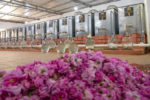Nursery Containers and Plant Health: Understanding the Dynamics
Nursery containers are more than just receptacles for soil and plants; they play a crucial role in the overall health and development of plants. This article delves into how different potting solutions influence plant growth, highlighting the intricate relationship between the two.
Understanding the Basics: What are Nursery Containers?
Nursery containers, commonly seen in gardening stores and nurseries, are pots designed to house plants during their initial stages of growth. They come in various sizes, materials, and designs, each having unique effects on plant health.
The Material Matters: Types of Nursery Containers
Traditional Plastic Pots
- Pros: Lightweight, cost-effective, widely available.
- Cons: Poor air circulation, risk of waterlogging.
Biodegradable Pots
- Pros: Eco-friendly, enhance root growth by breaking down in the soil.
- Cons: Short lifespan, can be more expensive.
Clay or Terracotta Pots
- Pros: Excellent air flow, natural look.
- Cons: Heavier, can dry out quickly.
Fabric Pots
- Pros: Promote air pruning, prevent root circling.
- Cons: Require more frequent watering, less stable.
Comparing the Impact on Plant Health
Each type of nursery container affects plant health differently. For instance, plastic pots, while convenient, can lead to poor root development due to limited air flow. On the other hand, fabric pots offer better air circulation, promoting healthier root systems.
Size and Shape: How They Influence Plant Growth
The Right Size for the Right Plant
Choosing the correct size of nursery container is critical. A pot too small can restrict root growth, while one too large can lead to waterlogging and root rot.
Shape Considerations
- Deep Pots: Ideal for long-rooted plants.
- Shallow Pots: Better for plants with shallow root systems.
Drainage: The Key to Healthy Plants
Importance of Proper Drainage
Good drainage in nursery containers is essential to prevent waterlogging and root diseases. Different materials offer varying levels of drainage efficiency.
Drainage Techniques
- Holes at the Bottom: Standard in most pots.
- Layering with Gravel: Can improve drainage in pots without holes.
Soil and Fertilization: Complementing the Nursery Container
Choosing the Right Soil Mix
The type of soil used in nursery containers can significantly impact plant health. A well-draining, nutrient-rich mix is ideal for most plants.
Fertilization Strategies
Regular fertilization is crucial for plant growth, especially in containers where nutrients can be quickly depleted.
Temperature and Light: External Factors Affecting Plant Health in Containers
The Role of Temperature
Different materials can react differently to temperature changes, affecting the root environment.
Light Considerations
The color and material of the nursery container can influence the amount of light absorbed or reflected, impacting plant growth.
Plant Health Monitoring: Signs to Look Out For
Indicators of Poor Container Choice
- Stunted growth, yellowing leaves, or root circling can indicate an issue with the nursery container.
Conclusion: Making the Right Choice for Optimal Plant Health
The Interconnected Relationship
Selecting the right nursery container is a crucial step in ensuring optimal plant health and growth. By understanding the relationship between potting solutions and plant development, gardeners can make informed decisions that benefit their plants.






